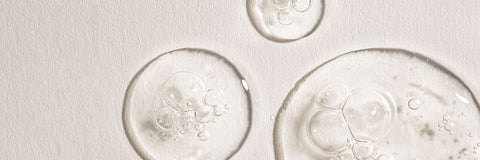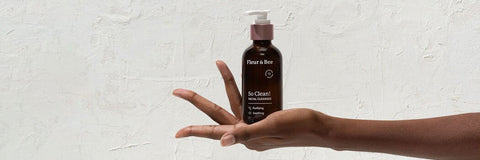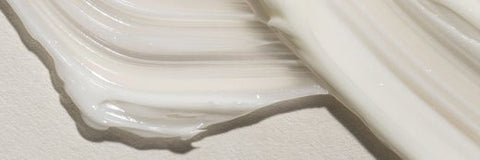Using properly formulated moisturizer is probably one of the most important things you will ever do for your skin. But did you know that there are three types of ingredients that are important to have in a moisturizer, each with their own respective purposes? They are broken into three different classes: humectants, emollients, and occlusives.
Let’s discuss the difference between these types of ingredients and why they are important to have in your moisturizer.
IN A NUTSHELL
Main Takeaways: Ingredients in moisturizers are broken up into three different categories, based on the variety of ways in which each function and deliver moisture to the skin.
Good to Know: There’s truly no one size fits all approach to moisturizing, but everyone should look for all 3 types of ingredients in their moisturizer for best results.
Recommended Products: Youth Fairy Retinol Moisturizer, H2 Oh Yeah Hydrating Moisturizer, and Crème de la Cream Brightening Moisturizer.
Why Moisturize?
Moisturizing is more than just another step in your routine. It is a crucial practice which works to volumize the skin, keep it pliable, and protect your outer layer. All of this combined helps to minimize the appearance of wrinkles and fine lines. By giving your skin the moisture it needs, you help balance your skin’s natural oils, ultimately preventing clogged pores.
Ensuring proper moisture levels in the skin is actually way more important for skin health than it is for just its appearance. Thirsty skin can actually result in redness, flakiness, cracking, and even bumps – all potential signs of damage and systemic irritation. While these symptoms can be common, and even more-so for certain skin types, they are far from safe. Your skin is your body’s largest organ and first line of defense against infection and allergens. Keeping it smooth, strong and free of dryness that can compromise its protective barrier is critical not just for your face, but your whole body.
There are three different classes of ingredients in moisturizers – humectants, emollients, and occlusives. Each function differently and all are important to include in your moisturizer.
Humectant, Emollient, or Occlusive?
Your skin needs a combination of all three to properly protect and deliver all that is necessary for your skin to look and feel its best. This is one of the major differences between using a face cream and simply using a facial oil to moisturize your skin. Most face creams include all three categories, while a facial oil usually only contains emollient and occlusive ingredients and lacks humectants.
Luckily for you, all our moisturizers - like Crème de la Cream brightening moisturizer - include humectants, emollients and occlusives to best keep your skin well-hydrated, protected and properly moisturized.
Let’s talk about what each type of ingredient is and what it does for your skin.
Humectants
Humectants attract water to the skin. They tend to be on the lighter side and are absorbed pretty quickly, making them great for moisturizing oily or blemish-prone skin. Those with normal to dry skin, who inherently produce less of the natural compounds like amino acids and hyaluronic acid, benefit from their ability to support and replenish proper levels of these “natural moisturizing factors”, or NMFs.
These little moisture magnets are invaluable in keeping skin hydrated and healthy. But using them can require a bit of mindfulness. We know humectants bring water to our skin, but they mostly do so by acting as a middle-man and drawing water from wherever there’s more of it to wherever there’s less of it. And unfortunately, sometimes your skin gets shafted in the process. If the ambient air is drier than your skin was prior to you applying your moisturizer, humectant ingredients will actually transfer moisture to the atmosphere instead of your skin! Some products make the assumption that this will occur at some point and preemptively include other ingredients beside humectants in their formulas to ensure 360 moisture. And what kinds of ingredients are those? We are so glad you asked!
Emollients
Emollients moisturize by filling gaps between skin cells with lipids. This softens the skin and helps repair any surface damage, providing for a smoother appearance and supporting your protective skin barrier. Some of the more commonly used emollients tend to be richer ingredients, like cocoa butter, colloidal oatmeal, lanolin, and various oils like safflower and sunflower oil. What’s interesting, however, is that emollients also tend to act as moderate occlusives, which brings us to our last kind of moisturizing ingredient…
Occlusives
Think of occlusives as little suits of armor, protecting against all kinds of nasties - dryness included. Occlusives create a barrier on the outermost layer of the skin, defending against moisture-loss and environmental damage. Occlusives also cleverly coat any other moisturizers you may have applied prior to your occlusive, locking in all of their benefits. Just remember that it’s important to include humectant and emollient ingredients, as using occlusives on their own won’t get you nearly as far.
Occlusives are the oiliest of all three types of moisturizers and are great for those with dry or cracked skin. Some of our favorite face-ready occlusives
include argan oil and shea butter.
It goes without saying, all our natural face creams include all three of these vital ingredients. If you are looking for a moisturizer to deeply hydrate, we recommend H2 Oh Yeah hydrating moisturizer; to smooth fine lines and wrinkles, Youth Fairy retinol moisturizer; and to rid of dark spots and restore a glow, Crème de la Cream brightening moisturizer.
Things you buy through our links may earn us a commission.







